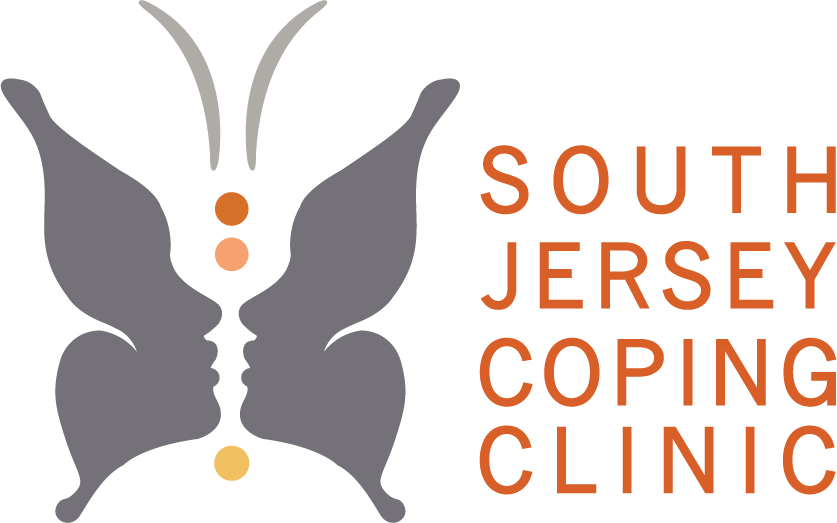In the tumultuous sea of mental health challenges, anxiety disorders stand as formidable waves, often leaving individuals feeling overwhelmed and adrift. With their pervasive grip on thoughts and emotions, anxiety disorders can significantly disrupt daily life, hindering relationships, work, and overall well-being. However, amid the turbulence, there exists a beacon of hope—a path toward understanding, assessing, and ultimately managing anxiety disorders.
In this blog, we embark on a journey through the complexities of anxiety disorders, exploring the multifaceted nature of these conditions and shedding light on effective strategies for finding relief. From unraveling the intricacies of various anxiety disorders to delving into practical techniques for managing symptoms, we’ll navigate the waters together, equipping you with the knowledge and tools necessary to chart a course toward calmer seas.
Join us as we dive deep into the world of anxiety disorders, uncovering insights, dispelling myths, and empowering individuals to reclaim control over their mental health. Let’s embark on this voyage together, forging a path toward understanding, resilience, and ultimately, relief from the burdens of anxiety.
Understanding Anxiety Disorders
At the heart of anxiety disorders lies a labyrinth of emotions, thoughts, and physiological responses. While it’s natural to experience occasional feelings of nervousness or apprehension, anxiety disorders amplify these sensations to debilitating levels, disrupting daily life and impairing functioning. From the overarching grip of generalized anxiety disorder (GAD) to the paralyzing intensity of panic disorder, the spectrum of anxiety disorders encompasses a wide range of experiences, each characterized by its own distinct features and challenges.
Types of Anxiety Disorders: From Generalized Anxiety to Panic Attacks
Before we explore the distinct types of anxiety disorders, it’s crucial to acknowledge the diverse manifestations of anxiety in individuals’ lives. From the persistent worry of generalized anxiety disorder to the fear of social interactions in social anxiety disorder, and the overwhelming intensity of panic attacks, each disorder presents unique challenges. Understanding these differences is vital for effectively identifying and addressing individuals’ specific needs. Now, let’s delve into the various types of anxiety disorders:
Generalized Anxiety Disorder (GAD):
Generalized anxiety disorder is marked by persistent and excessive worry about various aspects of life, including work, relationships, and health. Individuals with GAD often experience heightened anxiety without a specific trigger, leading to chronic feelings of unease and apprehension. Physical symptoms such as muscle tension, fatigue, and restlessness may accompany the emotional distress associated with GAD, impacting overall well-being and functioning.
Social Anxiety Disorder (SAD):
Social anxiety disorder, also known as social phobia, involves an intense fear of social situations and scrutiny by others. Individuals with SAD may avoid social interactions or public speaking opportunities out of fear of embarrassment or judgment, leading to significant distress and impairment in social and occupational functioning. Physical symptoms such as blushing, trembling, and sweating may occur during anxiety-provoking situations, exacerbating feelings of self-consciousness and discomfort.
Panic Disorder:
Panic disorder is characterized by recurrent and unexpected panic attacks, which are sudden episodes of intense fear or discomfort that peak within minutes. Panic attacks can occur unexpectedly or in response to specific triggers, such as crowded spaces or enclosed environments. Physical symptoms such as rapid heartbeat, chest pain, dizziness, and shortness of breath are common during panic attacks, often leading individuals to fear future episodes and avoid situations that may trigger them.
Recognizing the Signs and Symptoms: How Anxiety Manifests
Recognizing the signs and symptoms of anxiety disorders is paramount for early intervention and effective management. These manifestations may vary depending on the specific type of anxiety disorder, but common indicators include:
- Excessive worry and fear
- Irritability
- Difficulty concentrating
- Muscle tension
- Insomnia
- Panic attacks
Physical symptoms often accompany heightened anxiety, such as:
- Rapid heartbeat
- Sweating
- Trembling
- Gastrointestinal distress
Being attuned to these signs enables individuals and their support networks to seek appropriate help and implement strategies for coping and healing.
The Role of Genetics and Environment in Anxiety Development
Anxiety disorders result from a complex interplay of genetic predispositions and environmental influences. While genetics play a significant role, environmental factors such as childhood experiences, trauma, stress, and substance abuse also contribute to their development. Imbalances in neurotransmitters like serotonin and GABA further complicate the picture. Understanding this interaction is crucial for tailored treatment approaches that address both biological vulnerabilities and environmental stressors. Comprehensive care involves a combination of psychotherapy, pharmacotherapy, and lifestyle adjustments, offering individuals a more effective path towards managing anxiety disorders.
Assessing Anxiety: Tools and Techniques for Diagnosis
Accurate diagnosis is essential for effective treatment and management of anxiety disorders. Mental health professionals utilize a variety of tools and techniques to assess anxiety, including clinical interviews, self-report questionnaires, and standardized assessment scales such as the Hamilton Anxiety Rating Scale (HARS) and the Generalized Anxiety Disorder 7-item (GAD-7) scale. These assessment methods help clinicians evaluate the severity of symptoms, track changes over time, and tailor treatment plans to meet the individual needs of each patient.
 Holistic Approaches to Anxiety Management: Mind, Body, and Spirit
Holistic Approaches to Anxiety Management: Mind, Body, and Spirit
In addressing anxiety disorders, a holistic approach that encompasses the mind, body, and spirit is essential for comprehensive healing and well-being. Mind-body practices such as mindfulness meditation, yoga, and deep breathing exercises can help reduce stress and promote relaxation, fostering a sense of calm and inner peace. Physical activity, healthy nutrition, and adequate sleep are also integral components of anxiety management, supporting overall health and resilience against stressors.
Cognitive-Behavioral Strategies for Coping with Anxiety
Cognitive-behavioral therapy (CBT) stands as a cornerstone in the treatment of anxiety disorders, offering evidence-based strategies to address the complex interplay between thoughts, emotions, and behaviors. Through CBT, individuals learn to identify and challenge negative thought patterns and beliefs that contribute to anxiety, fostering healthier cognitive responses.
Additionally, exposure therapy, a key component of CBT, guides individuals in gradually confronting feared stimuli or situations in a controlled manner, facilitating desensitization and empowering them to overcome anxieties. Here are some effective cognitive-behavioral strategies for coping with anxiety:
- Thought challenging: Identify and challenge irrational or exaggerated thoughts contributing to anxiety.
- Cognitive restructuring: Replace negative thought patterns with more realistic and balanced perspectives.
- Relaxation techniques: Practice deep breathing, progressive muscle relaxation, and mindfulness to reduce physiological arousal.
- Behavioral experiments: Test out new behaviors or responses in anxiety-provoking situations to challenge anxious assumptions.
- Problem-solving skills: Learn effective problem-solving strategies to address underlying stressors and triggers.
- Exposure hierarchie s: Develop a step-by-step plan to gradually confront feared situations or stimuli, building confidence and resilience over time.
Lifestyle Modifications: Diet, Exercise, and Sleep in Anxiety Management
Lifestyle modifications play a significant role in managing anxiety disorders and promoting overall well-being. A balanced diet rich in fruits, vegetables, whole grains, and lean proteins can help stabilize mood and energy levels, while reducing the consumption of caffeine, alcohol, and processed foods may alleviate symptoms of anxiety. Regular exercise has been shown to reduce anxiety and depression by stimulating the release of endorphins, the body’s natural feel-good chemicals. Additionally, prioritizing adequate sleep and practicing good sleep hygiene can improve mood, cognitive function, and stress resilience.
Medication Options for Anxiety Disorders: Benefits and Considerations
In some cases, medication may be prescribed to alleviate the symptoms of anxiety disorders, particularly when other interventions have been ineffective or when symptoms are severe. Commonly prescribed medications for anxiety disorders include selective serotonin reuptake inhibitors (SSRIs), serotonin-norepinephrine reuptake inhibitors (SNRIs), benzodiazepines, and beta-blockers. While medication can be beneficial in reducing symptoms, it’s essential to weigh the potential benefits against the risks of side effects and dependency, and to work closely with a healthcare provider to monitor their effectiveness and adjust treatment as needed.
Seeking Support: Therapy, Support Groups, and Community Resources
Seeking support from mental health professionals, support groups, and community resources is essential for individuals living with anxiety disorders. Therapy provides a safe and supportive space for exploring thoughts, emotions, and coping strategies, while support groups offer peer support and validation from others who have shared similar experiences. Community resources such as helplines, online forums, and educational materials can also provide valuable information and assistance to those in need.
As we conclude this journey through the complexities of anxiety disorders, it’s evident that relief and management are within reach. By understanding the nuances of anxiety, recognizing its various manifestations, and embracing evidence-based strategies for coping and healing, individuals can reclaim control over their mental health and embark on a path toward resilience and well-being.
If you or someone you know is struggling with anxiety, remember that you’re not alone. Seek support from mental health professionals, explore therapy options, and connect with support groups or community resources.
For those in the Marlton, NJ area, consider reaching out to South Jersey Coping Clinic, a trusted mental health private practice. Their team of licensed professionals offers therapy for individuals, couples, families, and groups, specializing in treating anxiety among other mental health concerns.
Whether you’re facing anxiety, depression, family challenges, relationship struggles, or identity issues, South Jersey Coping Clinic is here to help. Reach out to them at info@southjerseycopingclinic.com or call (267) 225-1972 to start your journey toward healing and well-being today.







